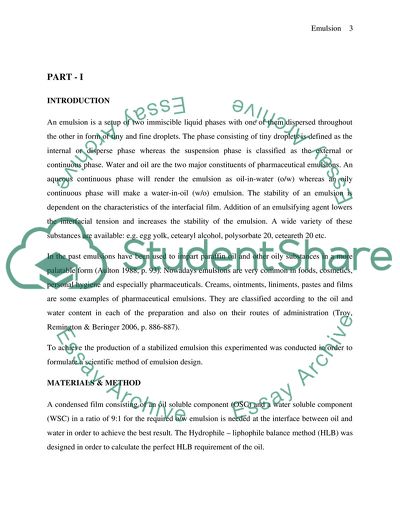Cite this document
(Emulsion Technology Lab Report Example | Topics and Well Written Essays - 1750 words, n.d.)
Emulsion Technology Lab Report Example | Topics and Well Written Essays - 1750 words. https://studentshare.org/chemistry/1758841-emulsion-technology
Emulsion Technology Lab Report Example | Topics and Well Written Essays - 1750 words. https://studentshare.org/chemistry/1758841-emulsion-technology
(Emulsion Technology Lab Report Example | Topics and Well Written Essays - 1750 Words)
Emulsion Technology Lab Report Example | Topics and Well Written Essays - 1750 Words. https://studentshare.org/chemistry/1758841-emulsion-technology.
Emulsion Technology Lab Report Example | Topics and Well Written Essays - 1750 Words. https://studentshare.org/chemistry/1758841-emulsion-technology.
“Emulsion Technology Lab Report Example | Topics and Well Written Essays - 1750 Words”. https://studentshare.org/chemistry/1758841-emulsion-technology.


